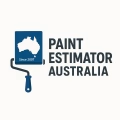Introduction:
The painting industry in Australia is highly competitive, and success often relies on providing accurate estimates and maintaining efficient operations. Overhead, and sundry (OH&S) costs are a significant factor in any painting project, and understanding these costs is crucial for painters in the new construction sector. OH&S costs encompass a range of expenses beyond the simple price of paint and labour, and they can make or break a project's profitability. This article aims to provide insights into these often-overlooked costs and offer strategies for painters in Adelong to ensure their businesses remain competitive and compliant with Australia's stringent safety standards.
Understanding Overhead and Sundry (OH&S) Costs
Overhead and sundry costs refer to the expenses incurred in a painting project beyond the direct costs of materials and labour. These include a range of essential expenditures such as safety equipment, site setup, administration, and waste disposal. Understanding and accurately estimating these costs are vital for several reasons:
- **Profitability:** Underestimating OH&S costs can erode profits, while overestimating may result in less competitive bids.
- **Compliance:** Australian safety standards are rigorous, and non-compliance can lead to hefty fines and a damaged reputation.
- **Resource Allocation:** Properly allocating resources ensures projects are completed efficiently and safely.
Safety Equipment and Compliance Costs
The cost of safety equipment and compliance is a significant component of OH&S expenses. Providing a safe working environment for your crew is not only a legal requirement but also a moral obligation. Some key considerations include:
- **Personal Protective Equipment (PPE):** Providing adequate PPE, such as respirators, safety goggles, and protective clothing, is essential to protect your crew from hazardous materials and working conditions.
- **Safety Training:** Regular safety training and inductions are necessary to ensure your crew can identify and mitigate potential hazards.
- **Site-Specific Requirements:** Certain projects may have unique safety requirements, such as working at heights or in confined spaces, necessitating additional equipment and training.
Site Setup and Administration
Setting up a worksite and managing administrative tasks also incur significant costs. These often-overlooked expenses include:
- **Site Establishment:** Costs associated with setting up a safe worksite, including erecting scaffolding, containment measures, and signage.
- **Administration:** Managing projects requires administrative tasks such as estimating, quoting, progress claims, and invoicing. These tasks consume time and resources.
- **Supervision:** Ensuring adequate supervision of your crew is essential for safety and quality control, and it adds to labour costs.
Waste Management and Environmental Costs
Waste management and environmental compliance are crucial considerations in painting projects, and they come at a cost:
- **Waste Disposal:** Proper disposal of hazardous waste, such as paint and solvents, incurs costs and must comply with environmental regulations.
- **Environmental Compliance:** Australian environmental standards are strict, and non-compliance can result in significant fines. Understanding these requirements is essential for accurate estimating.
Labour Productivity and Crew Sizing
Labour productivity rates vary depending on crew size and experience. Understanding these rates is vital for accurate estimating:
- **Productivity Rates:** Larger crews may complete tasks faster but might have higher overhead costs. Smaller teams could be more cost-effective for smaller projects.
- **Experience:** The experience level of your crew impacts productivity. Experienced painters may command higher rates but can complete work more efficiently.
- **Specialised Tasks:** Certain tasks require specialised skills, impacting labour costs and productivity.
Calculating Labour Productivity Rates
To calculate labour productivity rates for different crew sizes, you can use the following formula:
- *Labour Productivity Rate = Total Units Produced / Total Labour Hours**
For example, let's compare the productivity rates of two crews:
- *Crew A:** 4 painters, completing a project in 80 hours, producing 400m2 of painted surface.
- *Crew B:** 2 painters, taking 120 hours to complete the same project, resulting in the same output.
- *Labour Productivity Rate for Crew A = 400m2 / 80 hours = 5m2/hour**
- *Labour Productivity Rate for Crew B = 400m2 / 120 hours = 3.33m2/hour**
FAQs
How do OH&S costs impact my business's competitiveness?
Underestimating OH&S costs can lead to thin profit margins and the inability to invest in growth. Accurate estimating ensures you remain competitive without sacrificing profitability.
What are the key components of OH&S costs in painting projects?
OH&S costs include safety equipment, site setup, administration, waste disposal, and environmental compliance. These expenses are essential for legal compliance and maintaining a safe worksite.
How do I ensure my business complies with Australian safety standards?
Complying with Australian safety standards requires providing adequate PPE, conducting regular safety training, and staying informed about site-specific requirements. Non-compliance can result in fines and reputational damage.
What factors should I consider when calculating labour productivity rates?
Labour productivity is influenced by crew size, experience, and the presence of specialised tasks. Larger crews may complete projects faster, but smaller crews could be more cost-effective, depending on the project's scope.
How can I optimise my labour productivity?
Optimising labour productivity involves understanding the scope of work, crew capabilities, and project timelines. Proper resource allocation and efficient processes are key to enhancing productivity while managing costs.
Key Information
| Crew Size | Total Labour Hours | Total Units Produced | Labour Productivity Rate |
| ——— | —————— | ——————– | ———————– |
|---|---|---|---|
| 4 Painters | 80 hours | 400m2 | 5m2/hour |
| 6 Painters | 60 hours | 600m2 | 10m2/hour |
| 8 Painters | 50 hours | 800m2 | 16m2/hour |
| 10 Painters | 45 hours | 900m2 | 20m2/hour |
| 2 Painters | 120 hours | 400m2 | 3.33m2/hour | | 4 Painters | 80 hours | 400m2 | 5m2/hour | | 6 Painters | 60 hours | 600m2 | 10m2/hour | | 8 Painters | 50 hours | 800m2 | 16m2/hour | | 10 Painters | 45 hours | 900m2 | 20m2/hour |
| OH&S Cost Category | Description |
| —————– | ———– |
|---|---|
| Site Setup | Scaffolding, containment, signage |
| Administration | Estimating, quoting, invoicing |
| Waste Management | Hazardous waste disposal |
| Environmental Compliance | Adherence to environmental regulations |
| Safety Equipment | PPE, safety training, site-specific requirements | | Site Setup | Scaffolding, containment, signage | | Administration | Estimating, quoting, invoicing | | Waste Management | Hazardous waste disposal | | Environmental Compliance | Adherence to environmental regulations |
Conclusion:
Understanding and effectively managing OH&S costs are critical for painters in the new construction industry in Adelong, Australia. By recognising the true costs of safety compliance, site setup, and labour productivity, businesses can provide accurate estimates, maintain profitability, and ensure a safe working environment for their crew.
Call to Action:
Get ahead of the competition by incorporating accurate OH&S cost calculations into your project estimates. Our paint labour estimator tool can assist you in streamlining the estimating process, ensuring you account for every cost factor and optimise your labour productivity. Start using our tool today to enhance your business's efficiency and compliance.



